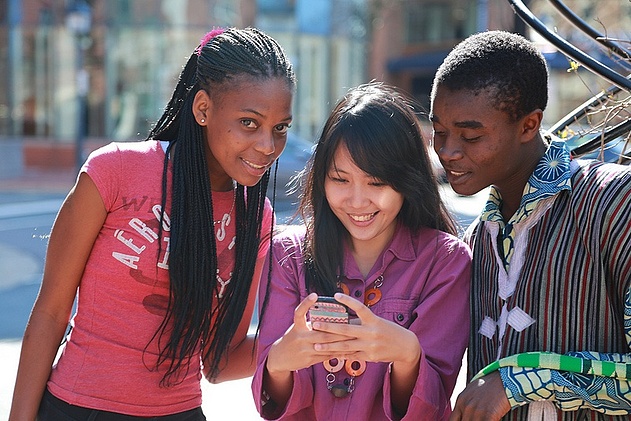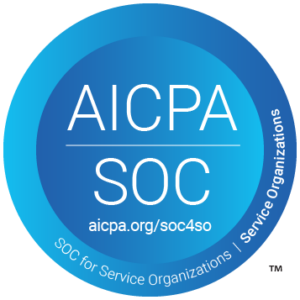By now you’ve no doubt heard about chatbots. In fact, you’re probably talking to one already on your smartphone (Hey Siri!) to help you make hands-free calls, get map directions, search for information on the internet, set reminders, schedule meetings … perhaps even order tacos, flowers, and more.
And you’ve likely read that Apple isn’t alone in betting big on chatbot technology. In April Facebook announced that
But what you might not know is that chatbots aren’t an exclusive, expensive space reserved only for global tech and media giants. In fact, the aforementioned big boys are diving into a space driven by messaging apps like WhatsApp, Slack, Kik, WeChat and others.
These companies capitalize on the idea that conversational interfaces provide better and more natural experiences for users. It’s a simple but powerful premise: People prefer to just say or type what they want and have it happen, rather than wind through a series of menus and fill out endless forms with the same personal info over and over again.
So how do colleges fit into this equation? Glad you asked. The rise of conversational user interfaces, coupled with the access to millions of students provided by popular platforms like SMS text messaging and Facebook Messenger, means that colleges that adopt chatbot technology have the means and the opportunity to communicate effectively with many students at once. Feel free to request a demo if you’re interested in seeing how colleges are using chatbots.
To understand this concept in another way, consider what students are more likely to do: Download yet another new app and/or bookmark a bunch of different websites for each and every school they’re interested in, or engage in conversations with those same schools over a platform they’re already using every day, like text messaging?
The only remaining challenge is to be able to efficiently and effectively scale those conversations. It’s a lot (too much!) to ask of admissions and campus services staff to engage in thousands of one-on-one text message conversations. Solving the problem of scalability is where chatbot technology enters the equation.
To understand how we’ve gotten to this exciting chapter of edtech, let’s review the key factors along the path of this new communications paradigm.
Going mobile: Teens have the world at their fingertips

Photo credit: AFS-USA Intercultural Programs via CC BY
News flash: Teenagers spend vast amounts of their waking hours with their noses buried in their phones.
In fact, 73% of 13- to 17-year-olds own or have access to a smartphone, and an additional 15% have a mobile phone, with just 12% reporting they don’t have any kind of cell phone, according to a study from the Pew Research Center. (Unless otherwise noted, statistics in this post derive from “Teens, Social Media & Technology Overview 2015.”)
Clearly, the shortest path to teens’ hearts and minds runs through their phones. But what’s the single best way to engage teenagers in meaningful, two-way interaction? If you think the answer is social media channels like Facebook, Twitter and Instagram, that’s a good guess, but it’s wrong.
Texting = Access + Engagement = Student Success
The answer? Text messaging, of course. In fact, 91% of teens with mobile phones use them for text messaging, mostly with good old-fashioned SMS (and/or via a messaging app or website, if not all of the above).
And as anyone who has a middle or high school student in their life knows, teenagers text. A lot.
Teens on average send and receive a total of 67 messages per day, and that number rises to 83 a day among 15- to 17-year-old girls, the most prolific texting demographic.
Colleges should be taking advantage of that kind of engagement. In fact, there’s a growing body of research that indicates that text messaging students has all kinds of benefits in terms of providing quality advising, raising graduation and retention rates, reducing summer melt, easing the first-year transition to college, building relationships with prospective students, and more.
Student success is at the core of AdmitHub’s mission, and we’re already making strides in collaboration with Georgia State, for whom we’ve developed “Pounce,” a custom chatbot that’s helping thousands of incoming Panthers navigate the path to and through college. Pounce operates via text message, answering questions, offering encouragement, and providing timely reminders and assistance as key next steps and important deadlines approach. And with a host of custom chatbots in development for other university partners, Pounce will soon be in good company. You can sign up for our newsletter to see who’s joining the college chatbot family soon.
Text messages trump emails, snail mail, websites, phone calls, apps …
While more and more colleges are coming to understand how important it is to add text messaging to their traditional mix of communications, the simple fact is that if you could only choose ONE channel on which to engage students, text messaging is by far the best option.
Text messages are all but guaranteed to be read, with a 98% open rate that dwarfs email open rates, which typically hover around 20 percent. And 90 percent of text messages get read less than 3 minutes after they’ve been sent. Meanwhile, consider that just 6% of teens engage in email on a daily basis. Those thick, glossy brochures and extensive mailers that colleges send out? They likely end up in the recycling bin, and even if they don’t, it’s very difficult to track their impact or influence on student behaviors. And good luck getting a teenager to answer a phone call from an unfamiliar number.
Most colleges have great websites with lots of important information to offer students, both current and prospective. The only problem with websites? Lots of students just aren’t willing to open a browser window, find the right website, and then hunt around for the one piece of information that they need at that particular time. In an increasingly on-demand economy, millennials want instant, personalized, customizable service and products. They don’t want canned responses, long search and wait times, endless customer service menus, verbose FAQ lists, and spammy, impersonal content flooding their inboxes.
And everyone, not just teens, is suffering from app fatigue. While there’s an app for almost everything, most people aren’t actually using very many of them with any amount of frequency. In fact, about 80% of people spend the majority of their mobile time using just three apps. While those specific three apps vary from person to person, it’s unrealistic to think a teenager wants to add a college-specific app to his/her crowded homescreen, much less use it all that regularly.
Rather than spending time and money building an app, and then trying to get students to download and use it, colleges would be better off devoting their resources to channels that teens are already using. And while SMS is hands-down the top channel, it’s not the only one worth pursuing.
The importance of being platform-agnostic: SMS vs. Messaging Apps vs. Social Media
While app fatigue is real, there’s a catch. It’s not that apps don’t have value; it’s that the average app doesn’t have a very wide audience or reach. But what about those top 3 apps that account for the majority of time spent on mobile devices? What if there was a way to reach students on those apps they’re using every day?
Well, there is a way. First of all, 91% of teens with mobile phones use them for text messaging. SMS, of course, is by far the most popular, but 33 percent of teens also use at least one other messaging app, like Facebook Messenger, Kik, or WhatsApp. Right now, Facebook is the most popular mobile app among millennials, as 21 percent of them use it the most on a daily basis.
In fact, the number of users on messaging apps have now eclipsed those on social networking apps.
So, while SMS and to a lesser extent Facebook are still the dominant players, particularly in the U.S., it’s important to be platform-agnostic in the future. If you want your college to remain competitive and maintain or improve its effectiveness in communicating with students, you must be willing to meet those students wherever they are.
And while usage of various messaging apps will no doubt rise and fall and evolve over time, chatbot technology can work across platforms, from SMS to Messenger and on down the list.
The Problem of Scale: How can colleges engage thousands of students in personalized, two-way conversations in real time?
While one of the big benefits chatbots offer is that versatility to spread across communication platforms, an even bigger upside is that chatbots solve the problem of scalability.
The good news: If you’re convinced that text messaging is absolutely crucial to your college’s communications and outreach strategy, you’re halfway there.
The bad news: If you’re skeptical about the need to incorporate chatbot technology … you’re only halfway there.
Texting messaging platforms can help you send timely information to lots and lots of students at once, but who’s going to respond to their responses? Sure, you can do some message branching with yes/no questions and numbered surveys with minimal human intervention, but if you want to actually have back-and-forth, truly two-way conversations with students, you better have a big staff with a lot of time on their hands to sift through and answer all of those incoming texts.
Or … you can put a chatbot to work as a virtual assistant to your busy staff. Let your bot provide on-demand assistance, timely reminders and answers to FAQs, freeing up your staff to do more meaningful, rewarding work that requires a human touch.
Key to communications = Ability to keep up with the latest trends = Augmented Intelligence and the chatbot revolution
Some folks fear that chatbots are out to take their jobs, but that’s not the case at all. At AdmitHub, we believe in AI, but perhaps not in the way you think. Purely artificial intelligence is limited in its ability to deliver high-quality, nuanced interactions with real people.
Augmented intelligence, on the other hand, is people-powered AI. Our chatbots are designed to deliver timely communication and the two-way exchange of key information. They are not designed to replace valuable interpersonal interactions between staff and students.
On the contrary, our chatbots facilitate these human-to-human relationships by connecting students to staff when they ask for it or really need it. And by handling a lot of the high-volume, repetitive, mundane work, our chatbots give your staff the time to build personal connections to students, as well as the ability to identity those times when students need a human touch the most.
The past 20 years of the Information Age have seen multiple shifts in the way schools communicate with students.
In the 1990s, increased Internet access gave rise to online engagement, informative websites, and the emergence of e-mail to complement traditional mail.
The 2000s spawned social media channels like Facebook and Twitter.
In the last five years, mobile has surpassed desktop as the dominant digital platform.
And today, with the emergence of conversational user interfaces, messaging is students’ preferred means of communication. The colleges that understand these trends and strive to evolve and innovate in response to them will be the colleges that students want to attend.
